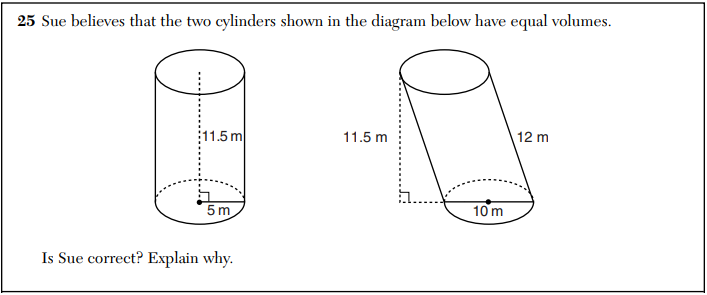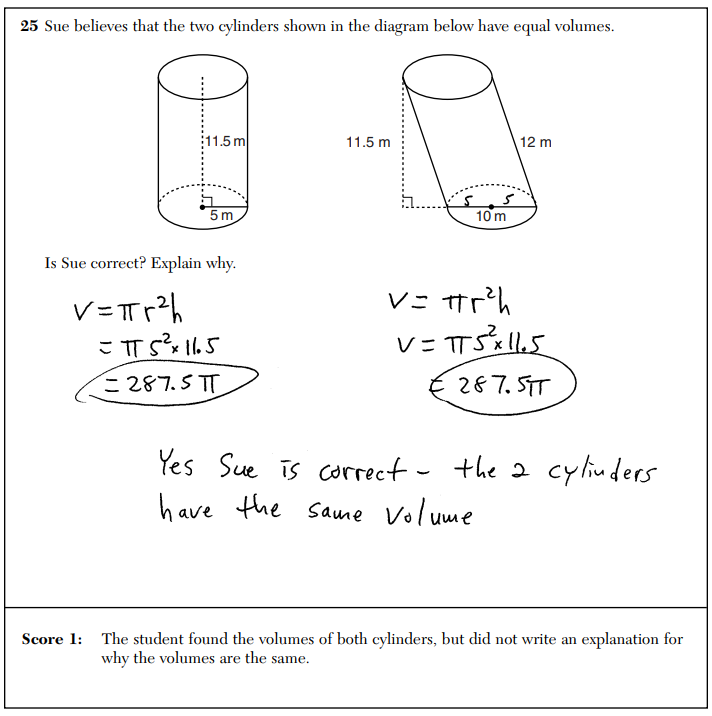On question 32 of the January, 2018 Common Core Algebra 1 Regents exam, students were asked to explain why a quadratic whose graph is given might have a particular set of factors. Here are two sample student responses from the state-produced Model Response Set.
On the left, the student says “Yes”, sets each factor to 0 and solves, and produces the roots x = -2 and x = 3. On the right, the student says “Yes, because the x-intercepts are (-2,0) and (3,0).”
One of these responses received full credit, the other half credit. I posted this to Twitter and invited people to guess.
One of these responses got full credit, the other got half credit. Which is which?#math #mathchat pic.twitter.com/4fw1QK2GWP
— Patrick Honner (@MrHonner) February 11, 2018
According to the official scoring guide, the response on the right earned full credit: it is a “complete and correct response”. The response on the left earned half credit, because the student “gave a justification, not an explanation.”
It seemed as though the majority of respondents on Twitter favored the response on the left; a few even specifically said it offered a better “explanation” than the full-credit response. Many did choose the response on the right, especially those familiar with how New York’s Regents exams are scored.
To me, both answers are unsatisfying. The full-credit response offers an “explanation” but is devoid of justification: the student doesn’t make the connection between the x-intercepts and the roots. The half-credit response derives the roots algebraically, but fails to explicitly connect the roots to the intercepts. It’s hard for me to accept that one of these responses is substantially better than the other: both responses expect the reader to fill in an equally important gap.
It’s also hard for me to accept what counts as “explanation” here. Several teachers familiar with New York’s Regents exams commented that, in this context, “explain” simply means use words. And we’ve seen example after example of ridiculous “explanations” on these exams. It sends the wrong message to students and teachers about what constitutes mathematics, and since the message is transmitted via high-stakes exams, it can’t be ignored.
Related Posts









